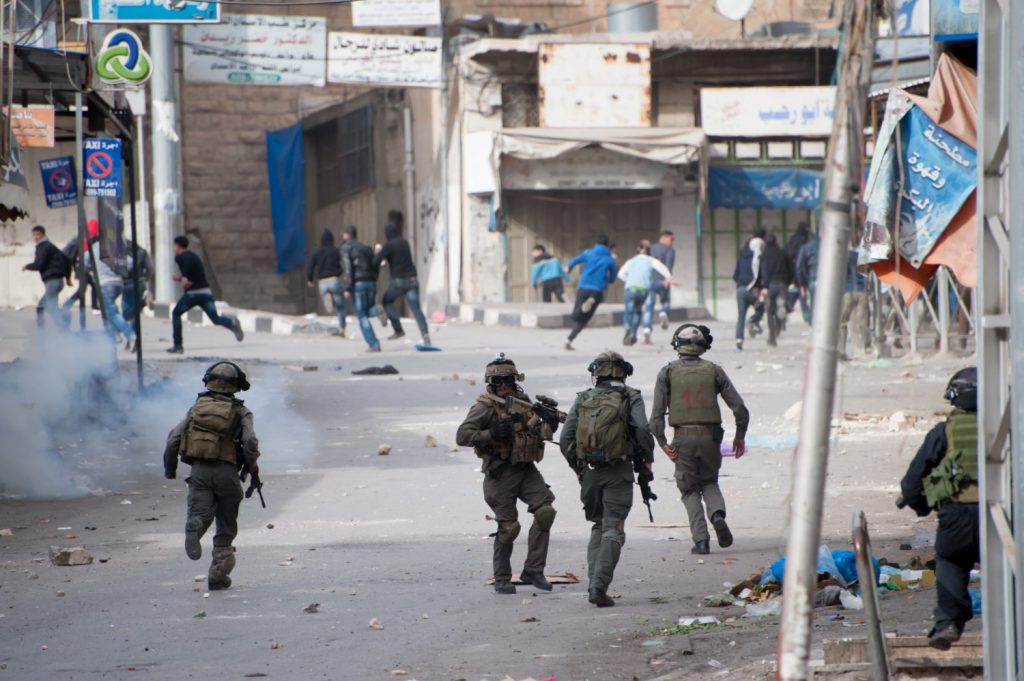Australia/Israel Review
Scribblings: The numbers game on Palestinian casualties
Jan 27, 2023 | Tzvi Fleischer

Both the UN and the media have made much of the fact that 2022 saw more West Bank Palestinians killed in clashes with Israeli forces than any year since 2004 – approximately 150. The UN put out several press releases and statements on this fact – including one on December 15 citing three UN “experts” denouncing “the rampant Israeli settler violence and excessive use of force” that led to the deaths.
There were major international news stories based on the UN claims, including a widely circulated AP story. Australian media stories about Israeli-Palestinian clashes have also repeatedly cited this casualty figure as part of the background provided.
And the figure appears to be largely factually correct, as far as it goes. Around 150 West Bank Palestinians were killed, and this is higher than in previous years. (However, when the ABC’s Allyson Horn said on ABC TV on Nov. 24, that “reports are that this has been the deadliest year for Palestinians in the occupied West Bank,” without qualifying this by saying “since 2004”, that was definitely not factually correct.)
However, the media has done a terrible job of looking further into the statistics and asking who exactly has been getting killed in what circumstances, and what this tells us about the actual reasons for this spike in Palestinian deaths. Fortunately, a number of other researchers have done this work for them.
One is a serving IDF soldier and history writer named Adin Haykin, who, throughout 2022, maintained a Twitter thread under his account@AdinHaykin1, in which he progressively documented almost every reported Palestinian death and the circumstances. In many cases, he was able to post pictures of the deceased individual posing with a weapon while surrounded by the symbols of a terrorist group.
At the end of the year, he compiled all the cases and found that no less than 142 out of the 153 Palestinians killed were either engaged in armed attacks, active members of a terrorist group, or participating in a violent riot. That’s 93%.
The pro-Israel advocacy group Honest Reporting also did a breakdown of Palestinians killed in the West Bank in 2022, coming up with similar numbers. They found that fully 60% of the Palestinians killed died as they were carrying out violent attacks on Israeli civilians or soldiers. Most of these, more than 50 cases, were actively shooting at Israelis with guns when they were killed. Smaller numbers were killed while carrying out Molotov cocktail, IED, car-ramming, or stone-throwing attacks. Another 29% were individuals killed while taking part in violent riots. Only a very few cases involved innocent individuals caught in crossfire, while a couple of other cases were heart attack deaths caused by stress.
Now you may be thinking Haykin and Honest Reporting are both pro-Israel advocates, so maybe their figures are fudged? However, a source with a very different perspective has come up with similar numbers.
That source is B’tselem, a far-left-wing Israeli human rights group that is very harshly critical of both Israel’s occupation of the West Bank, and the behaviour of Israeli troops. A B’tselem report published on Jan. 8 came to conclusions about the circumstances of most of the deaths consistent with the Haykin and Honest Reporting numbers – even while insisting that many of the killings were “unlawful” because deadly force should have been avoided in response to the violent actions of Palestinians killed.
Of the 146 cases it examined, B’tselem found 42 cases involved armed attackers, and 41 other cases were lawful for unspecified reasons, but presumably because those killed were acting as combatants. The group also admits 14 others were killed following attacks (while claiming they could have been stopped via non-lethal force, or were shot after the immediate danger had passed), and lists 21 cases in which Palestinians were killed in incidents where they were throwing stones at soldiers or cars. Finally, three were armed Palestinian Islamic Jihad terrorists killed in a car and four were illegal infiltrators into Israel. So even while calling many of the killings unlawful on dubious grounds, B’tselem agrees that 125 out of 146 cases involve Palestinians killed while involved in terror, armed violence or violent unrest. That is, 85%, broadly similar to the totals offered by Haykin and Honest Reporting.
What conclusions can we draw from these numbers? Very simply, the increase in Palestinians getting killed last year was a direct reflection of a huge uptick in Palestinians engaging in armed violence, terrorism or violent rioting.
Palestinians who shoot at Israeli civilians or troops tend to wind up dead in a firefight. Armed groups planning terror attacks necessitate Israeli raids into Palestinian towns to try to arrest the organisers, which often turns into firefights in which the target, and also other gunmen firing at Israeli troops, end up getting killed, thanks to superior IDF military technology and training.
Thus, more Palestinian terror attack attempts obviously means more Palestinians get killed.
And indeed, IDF statistics show a sharp uptick in violent attacks in and from the West Bank. There were 7,589 rock-throwing incidents, up from 5,532 in 2021, and 1,268 Molotov cocktail incidents, up from 1,022 in 2021. Most importantly, there was an exponential increase in shooting attacks, with 285 shooting incidents in 2022, compared to only 61 in 2021.
Attacks mostly emanating from the West Bank also claimed many more Israeli lives – 31 killed in 2022, compared to four in 2021.
So these widely cited numbers about Palestinian deaths told a story about increasing Palestinian terrorist violence and predictable and legitimate IDF responses to that violence – not “rampant Israeli settler violence and excessive use of force” – if journalists were only prepared to look.
Tags: Israel, Palestinians






